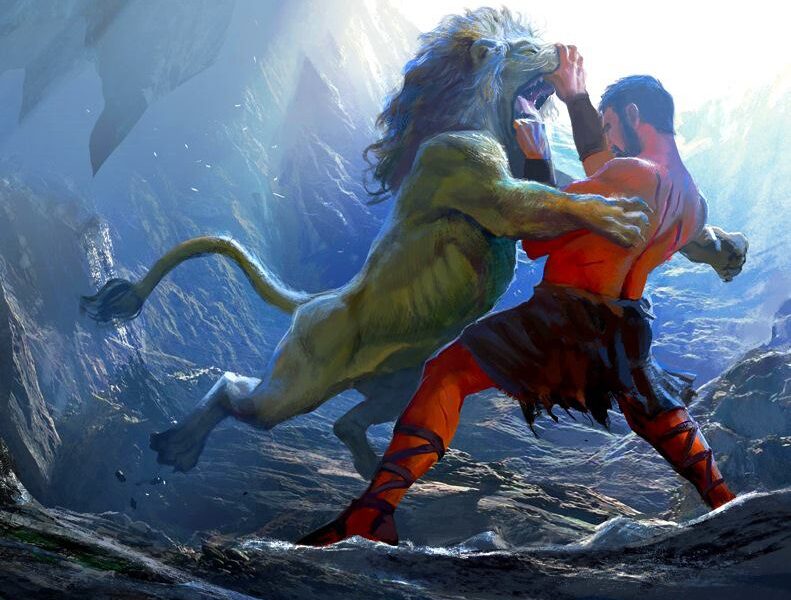Hey everyone, welcome to Mythology Explained. In today’s video we’re going to be discussing Hercules: more specifically, his 12 labours, ranking them from least to most dangerous. Before we jump into the list, though, we’re going to quickly touch on why it was that Hercules had to complete 12 nigh-impossible, death-defying labours.
Hera could be vicious and vindictive. She had good reason, to be sure: Zeus was a lecher and a serial-offender in the adultery department. That said, perhaps the victims of Hera’s wrath were unfairly chosen, for are the children begot from infidelity not blameless?
Of all Zeus’ bastards, none was more doggedly targeted by Hera than Hercules. Hera attempted to thwart, ruin, and kill Hercules at every turn, but her most malicious attack was when she cursed Hercules with a spell of madness.
In this state – his mind not his own – Hercules murdered his three sons and even his wife, Megara, who tried in vain to protect her children from her crazed husband. Hercules, seeking to atone for the atrocities he had committed, looking to cleanse himself of the sins of his past, traveled to Delphi where he consulted the resident oracle, who told Hercules that he needed purification, that a great penance was needed.
Hercules was instructed to seek his cousin Eurystheus, King of Myceanae, and to submit himself to whatever was tasked of him.
Eurystheus was cunning and opportunistic, and he was very concerned about not being supplanted by Hercules, who would have been the rightful king had it not been for a contrivance from Hera that had Eurystheus born prematurely so to be older than Hercules.
The labours devised by Eurystheus – encouraged by Hera – were diabolical in the degree of difficulty and danger entailed in them. His motivations for subjecting Hercules to such labours were two fold: to fully exploit and profit from having the strongest man on earth compelled to satisfy his every whim, and to eliminate a potential rival for his throne.
With that covered, let’s dive into our list, starting with Hercules’ fifth labour, which was to clean the Augean Stables.
King Auges was the owner of thousands of cattle, and their stables had not been cleaned in many years. You can imagine the mountain of dung that must have accumulated over this time. Hercules brokered a deal with king Augeas that granted him one tenth of the king’s cattle if he managed to clean out the stables in a single day. He managed to complete this task quickly by diverting two rivers, harnessing the great flow of water to do the work for him.
At number 11 we have the Cretan Bull, which was Hercules’ 7th labour
We’re going to start this entry off by taking a quick look at the Cretan Bull’s backstory.
King Minos prayed to the god Poseidon, who gifted the king with a snow-white bull with the understanding that Minos was to sacrifice this animal in Poseidon’s honour; but the animal was so beautiful that Minos decided to keep it for himself and sacrifice another in its stead. This betrayal incited Poseidon’s wrath. Poseidon bewitched Minos’ wife so that she became enamored with the bull, falling madly in love with it. She mated with the animal, and the offspring begot by their perverse coupling was the minotaur.
Hercules arrived in Crete, and when he expressed his intentions of capturing and taking the bull, king Minos was amenable to the idea – an understandable reaction given his history with the animal – and even offered Hercules assistance, though Hercules would decline the king’s offer, resolved to complete this task alone. The bull was wrestled into submission by the mighty hero and then promptly shipped away.
Our number 10 spot goes to the Erymanthian Boar, which was Hercules’ fourth labour
Hercules pursued the boar in the winter season, eventually driving the animal into a deep snow bank where the animal became incapacitated, allowing hercules to caputure it when it was more or less immobilized.
This labour ended up being more dangerous than it looked on paper, for Hercules became embroiled in a situation in which he was forced to slay many drunk centaurs who attacked him.
At number 9 we have the Stymphalian birds, which was Hercules’ sixth labour.
These birds were not to be trifled with. Their droppings were toxic; their beaks were made of bronze; and their sharp feathers could be shot as projectiles. A flock of them roosted in a thick grove of trees, and they were a scourge to the people who lived in the surrounding area, ravaging the countryside, destroying crops, and even killing people. Hercules was tasked with eradicating them or permanently driving them away. Athena gifted Hercules a bronze rattle, which the hero used to startle the birds out of their dwelling. A barrage of arrows was unleashed by Hercules, who shot the birds mid-flight.
Watch the video for the rest!
READ MORE: How a Greek God Became the Devil in Christianity – Mythology Explained.


